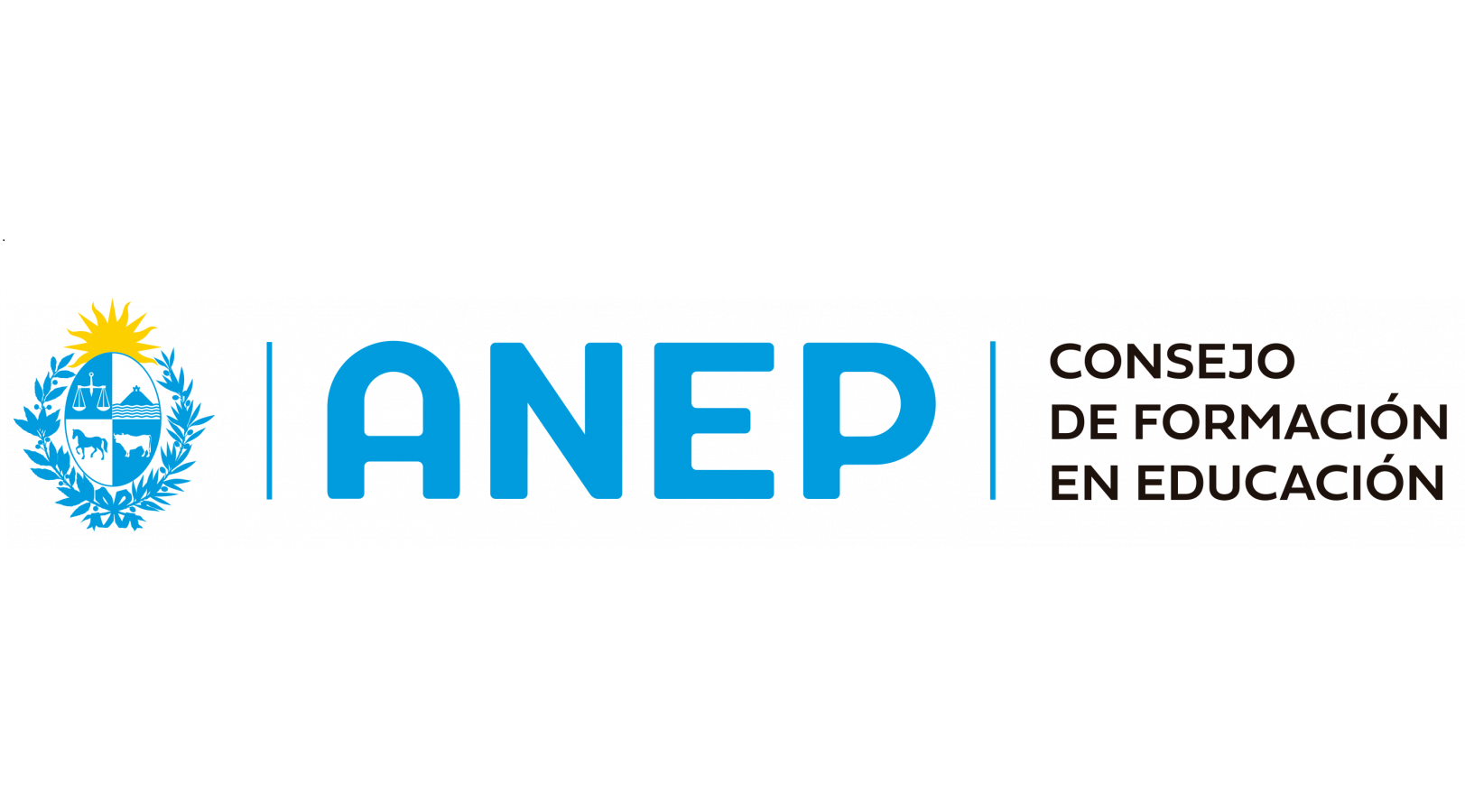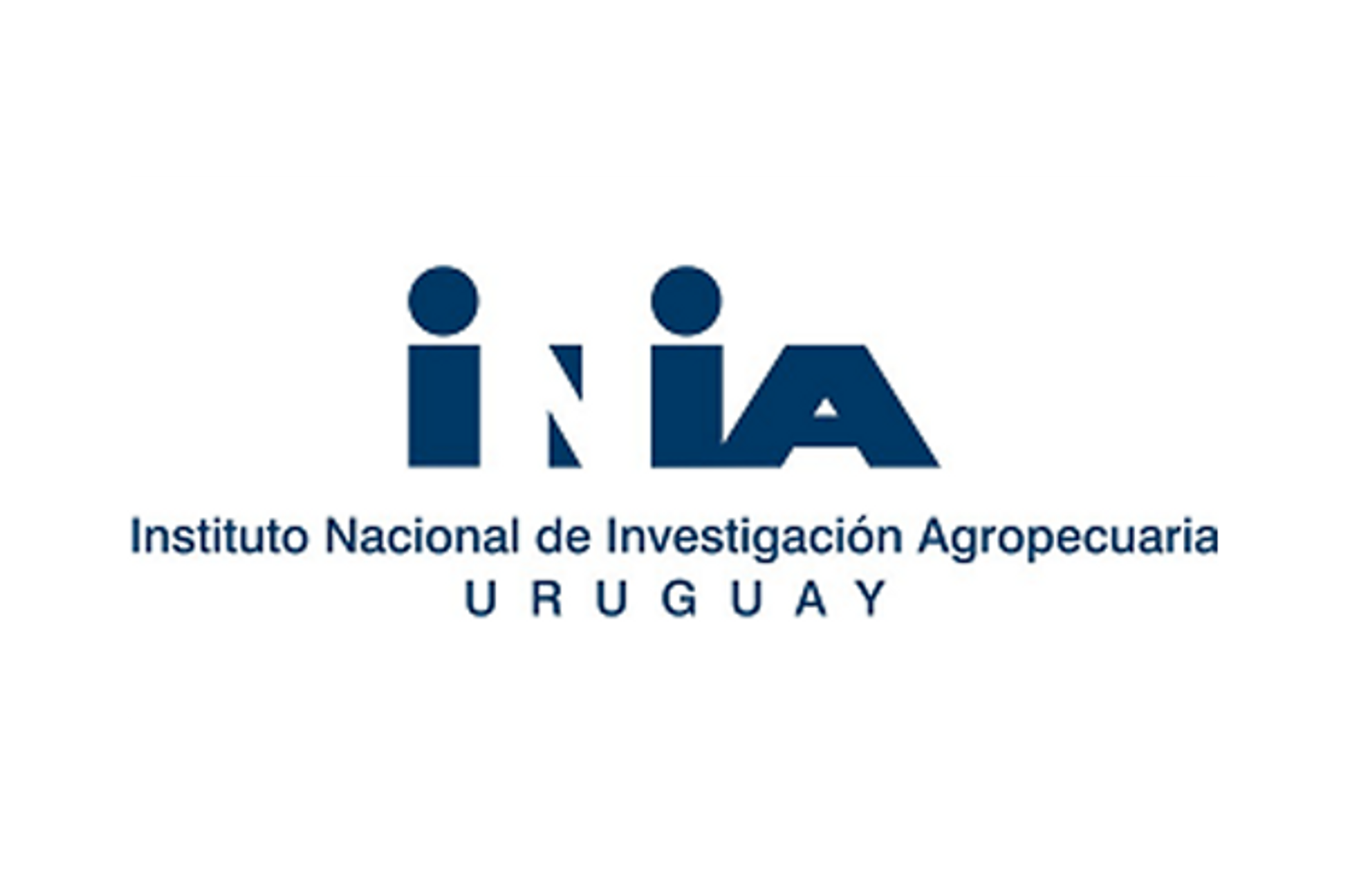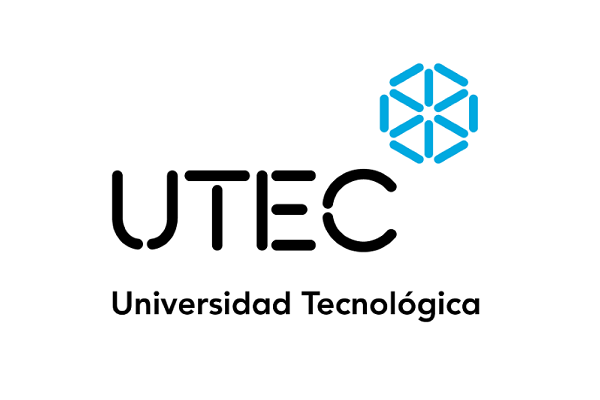On the application of graph neural networks for indoor positioning systems
Supervisor(es): Capdehourat, Germán - Larroca, Federico
Resumen:
Due to the inability of GPS (Global Positioning System) or other GNSS (Global Navigation Satellite System) methods to provide satisfactory precision for the indoor localization scenario, indoor positioning systems resort to other signals already available on-site, typically Wi-Fi given its ubiquity. However, instead of relying on an error-prone propagation model as in ranging methods, the popular fingerprinting positioning technique considers a more direct data-driven approach to the problem. First of all, the area of interest is divided into zones, and then a machine learning algorithm is trained to map between, for instance, power measurements from Access Points (APs) to the localization zone, thus effectively turning the problem into a classification one. However, although the positioning problem is a geometrical one, virtually all methods proposed in the literature disregard the underlying structure of the data, using generic machine learning algorithms. In this work we consider instead a graph-based learning method, Graph Neural Networks, a paradigm that has emerged in the last few years and constitutes the state-of-the-art for several problems. After presenting the pertinent theoretical background, we discuss two possibilities to construct the underlying graph for the positioning problem. We then perform a thorough evaluation of both possibilities, and compare it with some of the most popular machine learning alternatives. The main conclusion is that these graph-based methods obtain systematically better results, particularly with regards to practical aspects (e.g. gracefully tolerating faulty APs), which makes them a serious candidate to consider when deploying positioning systems.
Debido a la incapacidad del GPS (Global Positioning System o Sistema de Posicionamiento Global) o de otros métodos de navegación por satélite (GNSS por sus siglas en inglés) de proporcionar un posicionamiento en espacios interiores con suficiente precisión, se suele recurrir a otras señales ya disponibles en el lugar, típicamente Wi-Fi por su gran adopción. Existen diversas técnincas que utilizan la señal de Wi-Fi para realizar el posicionamiento modelando la propagación de la señal para alcanzar el objetivo. Sin embargo, debido a su alta complejidad, estos modelos de propagación son propensos a errores. Una alternativa que se popularizó es el posicionamiento en base a huellas (fingerprinting) que considera un enfoque basado en datos más directo al problema. El método consiste en dividir el área de interés en zonas y entrenar un algoritmo de aprendizaje automático para establecer una relación entre, por ejemplo, las mediciones de potencia de los puntos de acceso (Access Points o APs) y la zona de localización, convirtiéndose así en un problema de clasificación. Si bien el problema de posicionamiento es en última instancia un problema geométrico, prácticamente todos los métodos propuestos en la literatura ignoran la estructura subyacente de los datos, utilizando para su resolución algoritmos genéricos de aprendizaje automático. Este trabajo propone utilizar un método de aprendizaje basado en grafos (Graph Neural Networks o GNN), un paradigma que ha surgido en los últimos años y que constituye el estado del arte para varios problemas. Tras presentar el marco teórico pertinente, discutimos dos posibilidades para construir el grafo subyacente al problema de posicionamiento. A continuación realizamos una evaluación exhaustiva de ambas posibilidades y las comparamos con algunas de las alternativas más populares de aprendizaje automático. La principal conclusión es que estos métodos basados en grafos obtienen sistemáticamente mejores resultados, especialmente en lo que respecta a los aspectos prácticos (por ejemplo, tolerar fallas en APs), lo que los convierte en excelentes candidatos a considerar a la hora de diseñar e implementar sistemas de posicionamiento.
| 2022 | |
|
Indoor Localization Graph Neural Networks Wi-Fi Fingerprinting |
|
| Inglés | |
| Universidad de la República | |
| COLIBRI | |
| https://hdl.handle.net/20.500.12008/37361 | |
| Acceso abierto | |
| Licencia Creative Commons Atribución - No Comercial - Sin Derivadas (CC - By-NC-ND 4.0) |
| _version_ | 1807523179655069696 |
|---|---|
| author | Lezama Carignani, Facundo |
| author_facet | Lezama Carignani, Facundo |
| author_role | author |
| bitstream.checksum.fl_str_mv | 6429389a7df7277b72b7924fdc7d47a9 a006180e3f5b2ad0b88185d14284c0e0 e8c30e04e865334cac2bfcba70aad8cb 1996b8461bc290aef6a27d78c67b6b52 91f5f71c711495b832e3efc9bb6d7b37 |
| bitstream.checksumAlgorithm.fl_str_mv | MD5 MD5 MD5 MD5 MD5 |
| bitstream.url.fl_str_mv | http://localhost:8080/xmlui/bitstream/20.500.12008/37361/5/license.txt http://localhost:8080/xmlui/bitstream/20.500.12008/37361/2/license_url http://localhost:8080/xmlui/bitstream/20.500.12008/37361/3/license_text http://localhost:8080/xmlui/bitstream/20.500.12008/37361/4/license_rdf http://localhost:8080/xmlui/bitstream/20.500.12008/37361/1/Lez22.pdf |
| collection | COLIBRI |
| dc.contributor.filiacion.none.fl_str_mv | Lezama Carignani Facundo, Universidad de la República (Uruguay). Facultad de Ingeniería. |
| dc.creator.advisor.none.fl_str_mv | Capdehourat, Germán Larroca, Federico |
| dc.creator.none.fl_str_mv | Lezama Carignani, Facundo |
| dc.date.accessioned.none.fl_str_mv | 2023-06-01T17:45:21Z |
| dc.date.available.none.fl_str_mv | 2023-06-01T17:45:21Z |
| dc.date.issued.none.fl_str_mv | 2022 |
| dc.description.abstract.none.fl_txt_mv | Due to the inability of GPS (Global Positioning System) or other GNSS (Global Navigation Satellite System) methods to provide satisfactory precision for the indoor localization scenario, indoor positioning systems resort to other signals already available on-site, typically Wi-Fi given its ubiquity. However, instead of relying on an error-prone propagation model as in ranging methods, the popular fingerprinting positioning technique considers a more direct data-driven approach to the problem. First of all, the area of interest is divided into zones, and then a machine learning algorithm is trained to map between, for instance, power measurements from Access Points (APs) to the localization zone, thus effectively turning the problem into a classification one. However, although the positioning problem is a geometrical one, virtually all methods proposed in the literature disregard the underlying structure of the data, using generic machine learning algorithms. In this work we consider instead a graph-based learning method, Graph Neural Networks, a paradigm that has emerged in the last few years and constitutes the state-of-the-art for several problems. After presenting the pertinent theoretical background, we discuss two possibilities to construct the underlying graph for the positioning problem. We then perform a thorough evaluation of both possibilities, and compare it with some of the most popular machine learning alternatives. The main conclusion is that these graph-based methods obtain systematically better results, particularly with regards to practical aspects (e.g. gracefully tolerating faulty APs), which makes them a serious candidate to consider when deploying positioning systems. Debido a la incapacidad del GPS (Global Positioning System o Sistema de Posicionamiento Global) o de otros métodos de navegación por satélite (GNSS por sus siglas en inglés) de proporcionar un posicionamiento en espacios interiores con suficiente precisión, se suele recurrir a otras señales ya disponibles en el lugar, típicamente Wi-Fi por su gran adopción. Existen diversas técnincas que utilizan la señal de Wi-Fi para realizar el posicionamiento modelando la propagación de la señal para alcanzar el objetivo. Sin embargo, debido a su alta complejidad, estos modelos de propagación son propensos a errores. Una alternativa que se popularizó es el posicionamiento en base a huellas (fingerprinting) que considera un enfoque basado en datos más directo al problema. El método consiste en dividir el área de interés en zonas y entrenar un algoritmo de aprendizaje automático para establecer una relación entre, por ejemplo, las mediciones de potencia de los puntos de acceso (Access Points o APs) y la zona de localización, convirtiéndose así en un problema de clasificación. Si bien el problema de posicionamiento es en última instancia un problema geométrico, prácticamente todos los métodos propuestos en la literatura ignoran la estructura subyacente de los datos, utilizando para su resolución algoritmos genéricos de aprendizaje automático. Este trabajo propone utilizar un método de aprendizaje basado en grafos (Graph Neural Networks o GNN), un paradigma que ha surgido en los últimos años y que constituye el estado del arte para varios problemas. Tras presentar el marco teórico pertinente, discutimos dos posibilidades para construir el grafo subyacente al problema de posicionamiento. A continuación realizamos una evaluación exhaustiva de ambas posibilidades y las comparamos con algunas de las alternativas más populares de aprendizaje automático. La principal conclusión es que estos métodos basados en grafos obtienen sistemáticamente mejores resultados, especialmente en lo que respecta a los aspectos prácticos (por ejemplo, tolerar fallas en APs), lo que los convierte en excelentes candidatos a considerar a la hora de diseñar e implementar sistemas de posicionamiento. |
| dc.format.extent.es.fl_str_mv | 70 p. |
| dc.format.mimetype.es.fl_str_mv | application/pdf |
| dc.identifier.citation.es.fl_str_mv | Lezama Carignani, F. On the application of graph neural networks for indoor positioning systems [en línea]. Tesis de maestría. Montevideo : Udelar. FI. IIE, 2022. |
| dc.identifier.issn.none.fl_str_mv | 1688-2806 |
| dc.identifier.uri.none.fl_str_mv | https://hdl.handle.net/20.500.12008/37361 |
| dc.language.iso.none.fl_str_mv | en es eng spa |
| dc.publisher.es.fl_str_mv | Udelar. FI. |
| dc.rights.license.none.fl_str_mv | Licencia Creative Commons Atribución - No Comercial - Sin Derivadas (CC - By-NC-ND 4.0) |
| dc.rights.none.fl_str_mv | info:eu-repo/semantics/openAccess |
| dc.source.none.fl_str_mv | reponame:COLIBRI instname:Universidad de la República instacron:Universidad de la República |
| dc.subject.es.fl_str_mv | Indoor Localization Graph Neural Networks Wi-Fi Fingerprinting |
| dc.title.none.fl_str_mv | On the application of graph neural networks for indoor positioning systems |
| dc.type.es.fl_str_mv | Tesis de maestría |
| dc.type.none.fl_str_mv | info:eu-repo/semantics/masterThesis |
| dc.type.version.none.fl_str_mv | info:eu-repo/semantics/acceptedVersion |
| description | Due to the inability of GPS (Global Positioning System) or other GNSS (Global Navigation Satellite System) methods to provide satisfactory precision for the indoor localization scenario, indoor positioning systems resort to other signals already available on-site, typically Wi-Fi given its ubiquity. However, instead of relying on an error-prone propagation model as in ranging methods, the popular fingerprinting positioning technique considers a more direct data-driven approach to the problem. First of all, the area of interest is divided into zones, and then a machine learning algorithm is trained to map between, for instance, power measurements from Access Points (APs) to the localization zone, thus effectively turning the problem into a classification one. However, although the positioning problem is a geometrical one, virtually all methods proposed in the literature disregard the underlying structure of the data, using generic machine learning algorithms. In this work we consider instead a graph-based learning method, Graph Neural Networks, a paradigm that has emerged in the last few years and constitutes the state-of-the-art for several problems. After presenting the pertinent theoretical background, we discuss two possibilities to construct the underlying graph for the positioning problem. We then perform a thorough evaluation of both possibilities, and compare it with some of the most popular machine learning alternatives. The main conclusion is that these graph-based methods obtain systematically better results, particularly with regards to practical aspects (e.g. gracefully tolerating faulty APs), which makes them a serious candidate to consider when deploying positioning systems. |
| eu_rights_str_mv | openAccess |
| format | masterThesis |
| id | COLIBRI_f903e2185d162069c9b9e55258460afe |
| identifier_str_mv | Lezama Carignani, F. On the application of graph neural networks for indoor positioning systems [en línea]. Tesis de maestría. Montevideo : Udelar. FI. IIE, 2022. 1688-2806 |
| instacron_str | Universidad de la República |
| institution | Universidad de la República |
| instname_str | Universidad de la República |
| language | eng spa |
| language_invalid_str_mv | en es |
| network_acronym_str | COLIBRI |
| network_name_str | COLIBRI |
| oai_identifier_str | oai:colibri.udelar.edu.uy:20.500.12008/37361 |
| publishDate | 2022 |
| reponame_str | COLIBRI |
| repository.mail.fl_str_mv | mabel.seroubian@seciu.edu.uy |
| repository.name.fl_str_mv | COLIBRI - Universidad de la República |
| repository_id_str | 4771 |
| rights_invalid_str_mv | Licencia Creative Commons Atribución - No Comercial - Sin Derivadas (CC - By-NC-ND 4.0) |
| spelling | Lezama Carignani Facundo, Universidad de la República (Uruguay). Facultad de Ingeniería.2023-06-01T17:45:21Z2023-06-01T17:45:21Z2022Lezama Carignani, F. On the application of graph neural networks for indoor positioning systems [en línea]. Tesis de maestría. Montevideo : Udelar. FI. IIE, 2022.1688-2806https://hdl.handle.net/20.500.12008/37361Due to the inability of GPS (Global Positioning System) or other GNSS (Global Navigation Satellite System) methods to provide satisfactory precision for the indoor localization scenario, indoor positioning systems resort to other signals already available on-site, typically Wi-Fi given its ubiquity. However, instead of relying on an error-prone propagation model as in ranging methods, the popular fingerprinting positioning technique considers a more direct data-driven approach to the problem. First of all, the area of interest is divided into zones, and then a machine learning algorithm is trained to map between, for instance, power measurements from Access Points (APs) to the localization zone, thus effectively turning the problem into a classification one. However, although the positioning problem is a geometrical one, virtually all methods proposed in the literature disregard the underlying structure of the data, using generic machine learning algorithms. In this work we consider instead a graph-based learning method, Graph Neural Networks, a paradigm that has emerged in the last few years and constitutes the state-of-the-art for several problems. After presenting the pertinent theoretical background, we discuss two possibilities to construct the underlying graph for the positioning problem. We then perform a thorough evaluation of both possibilities, and compare it with some of the most popular machine learning alternatives. The main conclusion is that these graph-based methods obtain systematically better results, particularly with regards to practical aspects (e.g. gracefully tolerating faulty APs), which makes them a serious candidate to consider when deploying positioning systems.Debido a la incapacidad del GPS (Global Positioning System o Sistema de Posicionamiento Global) o de otros métodos de navegación por satélite (GNSS por sus siglas en inglés) de proporcionar un posicionamiento en espacios interiores con suficiente precisión, se suele recurrir a otras señales ya disponibles en el lugar, típicamente Wi-Fi por su gran adopción. Existen diversas técnincas que utilizan la señal de Wi-Fi para realizar el posicionamiento modelando la propagación de la señal para alcanzar el objetivo. Sin embargo, debido a su alta complejidad, estos modelos de propagación son propensos a errores. Una alternativa que se popularizó es el posicionamiento en base a huellas (fingerprinting) que considera un enfoque basado en datos más directo al problema. El método consiste en dividir el área de interés en zonas y entrenar un algoritmo de aprendizaje automático para establecer una relación entre, por ejemplo, las mediciones de potencia de los puntos de acceso (Access Points o APs) y la zona de localización, convirtiéndose así en un problema de clasificación. Si bien el problema de posicionamiento es en última instancia un problema geométrico, prácticamente todos los métodos propuestos en la literatura ignoran la estructura subyacente de los datos, utilizando para su resolución algoritmos genéricos de aprendizaje automático. Este trabajo propone utilizar un método de aprendizaje basado en grafos (Graph Neural Networks o GNN), un paradigma que ha surgido en los últimos años y que constituye el estado del arte para varios problemas. Tras presentar el marco teórico pertinente, discutimos dos posibilidades para construir el grafo subyacente al problema de posicionamiento. A continuación realizamos una evaluación exhaustiva de ambas posibilidades y las comparamos con algunas de las alternativas más populares de aprendizaje automático. La principal conclusión es que estos métodos basados en grafos obtienen sistemáticamente mejores resultados, especialmente en lo que respecta a los aspectos prácticos (por ejemplo, tolerar fallas en APs), lo que los convierte en excelentes candidatos a considerar a la hora de diseñar e implementar sistemas de posicionamiento.Submitted by Ribeiro Jorge (jribeiro@fing.edu.uy) on 2023-06-01T00:46:50Z No. of bitstreams: 2 license_rdf: 23149 bytes, checksum: 1996b8461bc290aef6a27d78c67b6b52 (MD5) Lez22.pdf: 4425737 bytes, checksum: 91f5f71c711495b832e3efc9bb6d7b37 (MD5)Approved for entry into archive by Berón Cecilia (cberon@fing.edu.uy) on 2023-06-01T17:39:22Z (GMT) No. of bitstreams: 2 license_rdf: 23149 bytes, checksum: 1996b8461bc290aef6a27d78c67b6b52 (MD5) Lez22.pdf: 4425737 bytes, checksum: 91f5f71c711495b832e3efc9bb6d7b37 (MD5)Made available in DSpace by Luna Fabiana (fabiana.luna@seciu.edu.uy) on 2023-06-01T17:45:21Z (GMT). No. of bitstreams: 2 license_rdf: 23149 bytes, checksum: 1996b8461bc290aef6a27d78c67b6b52 (MD5) Lez22.pdf: 4425737 bytes, checksum: 91f5f71c711495b832e3efc9bb6d7b37 (MD5) Previous issue date: 202270 p.application/pdfenesengspaUdelar. FI.Las obras depositadas en el Repositorio se rigen por la Ordenanza de los Derechos de la Propiedad Intelectual de la Universidad de la República.(Res. Nº 91 de C.D.C. de 8/III/1994 – D.O. 7/IV/1994) y por la Ordenanza del Repositorio Abierto de la Universidad de la República (Res. Nº 16 de C.D.C. de 07/10/2014)info:eu-repo/semantics/openAccessLicencia Creative Commons Atribución - No Comercial - Sin Derivadas (CC - By-NC-ND 4.0)Indoor LocalizationGraph Neural NetworksWi-Fi FingerprintingOn the application of graph neural networks for indoor positioning systemsTesis de maestríainfo:eu-repo/semantics/masterThesisinfo:eu-repo/semantics/acceptedVersionreponame:COLIBRIinstname:Universidad de la Repúblicainstacron:Universidad de la RepúblicaLezama Carignani, FacundoCapdehourat, GermánLarroca, FedericoUniversidad de la República (Uruguay). Facultad de Ingeniería.Magíster en Ingeniería de la Energía.LICENSElicense.txtlicense.txttext/plain; charset=utf-84267http://localhost:8080/xmlui/bitstream/20.500.12008/37361/5/license.txt6429389a7df7277b72b7924fdc7d47a9MD55CC-LICENSElicense_urllicense_urltext/plain; charset=utf-850http://localhost:8080/xmlui/bitstream/20.500.12008/37361/2/license_urla006180e3f5b2ad0b88185d14284c0e0MD52license_textlicense_texttext/html; charset=utf-838782http://localhost:8080/xmlui/bitstream/20.500.12008/37361/3/license_texte8c30e04e865334cac2bfcba70aad8cbMD53license_rdflicense_rdfapplication/rdf+xml; charset=utf-823149http://localhost:8080/xmlui/bitstream/20.500.12008/37361/4/license_rdf1996b8461bc290aef6a27d78c67b6b52MD54ORIGINALLez22.pdfLez22.pdfapplication/pdf4425737http://localhost:8080/xmlui/bitstream/20.500.12008/37361/1/Lez22.pdf91f5f71c711495b832e3efc9bb6d7b37MD5120.500.12008/373612023-06-01 14:45:21.802oai:colibri.udelar.edu.uy:20.500.12008/37361VGVybWlub3MgeSBjb25kaWNpb25lcyByZWxhdGl2YXMgYWwgZGVwb3NpdG8gZGUgb2JyYXMKCgpMYXMgb2JyYXMgZGVwb3NpdGFkYXMgZW4gZWwgUmVwb3NpdG9yaW8gc2UgcmlnZW4gcG9yIGxhIE9yZGVuYW56YSBkZSBsb3MgRGVyZWNob3MgZGUgbGEgUHJvcGllZGFkIEludGVsZWN0dWFsICBkZSBsYSBVbml2ZXJzaWRhZCBEZSBMYSBSZXDDumJsaWNhLiAoUmVzLiBOwrogOTEgZGUgQy5ELkMuIGRlIDgvSUlJLzE5OTQg4oCTIEQuTy4gNy9JVi8xOTk0KSB5ICBwb3IgbGEgT3JkZW5hbnphIGRlbCBSZXBvc2l0b3JpbyBBYmllcnRvIGRlIGxhIFVuaXZlcnNpZGFkIGRlIGxhIFJlcMO6YmxpY2EgKFJlcy4gTsK6IDE2IGRlIEMuRC5DLiBkZSAwNy8xMC8yMDE0KS4gCgpBY2VwdGFuZG8gZWwgYXV0b3IgZXN0b3MgdMOpcm1pbm9zIHkgY29uZGljaW9uZXMgZGUgZGVww7NzaXRvIGVuIENPTElCUkksIGxhIFVuaXZlcnNpZGFkIGRlIFJlcMO6YmxpY2EgcHJvY2VkZXLDoSBhOiAgCgphKSBhcmNoaXZhciBtw6FzIGRlIHVuYSBjb3BpYSBkZSBsYSBvYnJhIGVuIGxvcyBzZXJ2aWRvcmVzIGRlIGxhIFVuaXZlcnNpZGFkIGEgbG9zIGVmZWN0b3MgZGUgZ2FyYW50aXphciBhY2Nlc28sIHNlZ3VyaWRhZCB5IHByZXNlcnZhY2nDs24KYikgY29udmVydGlyIGxhIG9icmEgYSBvdHJvcyBmb3JtYXRvcyBzaSBmdWVyYSBuZWNlc2FyaW8gIHBhcmEgZmFjaWxpdGFyIHN1IHByZXNlcnZhY2nDs24geSBhY2Nlc2liaWxpZGFkIHNpbiBhbHRlcmFyIHN1IGNvbnRlbmlkby4KYykgcmVhbGl6YXIgbGEgY29tdW5pY2FjacOzbiBww7pibGljYSB5IGRpc3BvbmVyIGVsIGFjY2VzbyBsaWJyZSB5IGdyYXR1aXRvIGEgdHJhdsOpcyBkZSBJbnRlcm5ldCBtZWRpYW50ZSBsYSBwdWJsaWNhY2nDs24gZGUgbGEgb2JyYSBiYWpvIGxhIGxpY2VuY2lhIENyZWF0aXZlIENvbW1vbnMgc2VsZWNjaW9uYWRhIHBvciBlbCBwcm9waW8gYXV0b3IuCgoKRW4gY2FzbyBxdWUgZWwgYXV0b3IgaGF5YSBkaWZ1bmRpZG8geSBkYWRvIGEgcHVibGljaWRhZCBhIGxhIG9icmEgZW4gZm9ybWEgcHJldmlhLCAgcG9kcsOhIHNvbGljaXRhciB1biBwZXLDrW9kbyBkZSBlbWJhcmdvIHNvYnJlIGxhIGRpc3BvbmliaWxpZGFkIHDDumJsaWNhIGRlIGxhIG1pc21hLCBlbCBjdWFsIGNvbWVuemFyw6EgYSBwYXJ0aXIgZGUgbGEgYWNlcHRhY2nDs24gZGUgZXN0ZSBkb2N1bWVudG8geSBoYXN0YSBsYSBmZWNoYSBxdWUgaW5kaXF1ZSAuCgpFbCBhdXRvciBhc2VndXJhIHF1ZSBsYSBvYnJhIG5vIGluZnJpZ2UgbmluZ8O6biBkZXJlY2hvIHNvYnJlIHRlcmNlcm9zLCB5YSBzZWEgZGUgcHJvcGllZGFkIGludGVsZWN0dWFsIG8gY3VhbHF1aWVyIG90cm8uCgpFbCBhdXRvciBnYXJhbnRpemEgcXVlIHNpIGVsIGRvY3VtZW50byBjb250aWVuZSBtYXRlcmlhbGVzIGRlIGxvcyBjdWFsZXMgbm8gdGllbmUgbG9zIGRlcmVjaG9zIGRlIGF1dG9yLCAgaGEgb2J0ZW5pZG8gZWwgcGVybWlzbyBkZWwgcHJvcGlldGFyaW8gZGUgbG9zIGRlcmVjaG9zIGRlIGF1dG9yLCB5IHF1ZSBlc2UgbWF0ZXJpYWwgY3V5b3MgZGVyZWNob3Mgc29uIGRlIHRlcmNlcm9zIGVzdMOhIGNsYXJhbWVudGUgaWRlbnRpZmljYWRvIHkgcmVjb25vY2lkbyBlbiBlbCB0ZXh0byBvIGNvbnRlbmlkbyBkZWwgZG9jdW1lbnRvIGRlcG9zaXRhZG8gZW4gZWwgUmVwb3NpdG9yaW8uCgpFbiBvYnJhcyBkZSBhdXRvcsOtYSBtw7psdGlwbGUgL3NlIHByZXN1bWUvIHF1ZSBlbCBhdXRvciBkZXBvc2l0YW50ZSBkZWNsYXJhIHF1ZSBoYSByZWNhYmFkbyBlbCBjb25zZW50aW1pZW50byBkZSB0b2RvcyBsb3MgYXV0b3JlcyBwYXJhIHB1YmxpY2FybGEgZW4gZWwgUmVwb3NpdG9yaW8sIHNpZW5kbyDDqXN0ZSBlbCDDum5pY28gcmVzcG9uc2FibGUgZnJlbnRlIGEgY3VhbHF1aWVyIHRpcG8gZGUgcmVjbGFtYWNpw7NuIGRlIGxvcyBvdHJvcyBjb2F1dG9yZXMuCgpFbCBhdXRvciBzZXLDoSByZXNwb25zYWJsZSBkZWwgY29udGVuaWRvIGRlIGxvcyBkb2N1bWVudG9zIHF1ZSBkZXBvc2l0YS4gTGEgVURFTEFSIG5vIHNlcsOhIHJlc3BvbnNhYmxlIHBvciBsYXMgZXZlbnR1YWxlcyB2aW9sYWNpb25lcyBhbCBkZXJlY2hvIGRlIHByb3BpZWRhZCBpbnRlbGVjdHVhbCBlbiBxdWUgcHVlZGEgaW5jdXJyaXIgZWwgYXV0b3IuCgpBbnRlIGN1YWxxdWllciBkZW51bmNpYSBkZSB2aW9sYWNpw7NuIGRlIGRlcmVjaG9zIGRlIHByb3BpZWRhZCBpbnRlbGVjdHVhbCwgbGEgVURFTEFSICBhZG9wdGFyw6EgdG9kYXMgbGFzIG1lZGlkYXMgbmVjZXNhcmlhcyBwYXJhIGV2aXRhciBsYSBjb250aW51YWNpw7NuIGRlIGRpY2hhIGluZnJhY2Npw7NuLCBsYXMgcXVlIHBvZHLDoW4gaW5jbHVpciBlbCByZXRpcm8gZGVsIGFjY2VzbyBhIGxvcyBjb250ZW5pZG9zIHkvbyBtZXRhZGF0b3MgZGVsIGRvY3VtZW50byByZXNwZWN0aXZvLgoKTGEgb2JyYSBzZSBwb25kcsOhIGEgZGlzcG9zaWNpw7NuIGRlbCBww7pibGljbyBhIHRyYXbDqXMgZGUgbGFzIGxpY2VuY2lhcyBDcmVhdGl2ZSBDb21tb25zLCBlbCBhdXRvciBwb2Ryw6Egc2VsZWNjaW9uYXIgdW5hIGRlIGxhcyA2IGxpY2VuY2lhcyBkaXNwb25pYmxlczoKCgpBdHJpYnVjacOzbiAoQ0MgLSBCeSk6IFBlcm1pdGUgdXNhciBsYSBvYnJhIHkgZ2VuZXJhciBvYnJhcyBkZXJpdmFkYXMsIGluY2x1c28gY29uIGZpbmVzIGNvbWVyY2lhbGVzLCBzaWVtcHJlIHF1ZSBzZSByZWNvbm96Y2EgYWwgYXV0b3IuCgpBdHJpYnVjacOzbiDigJMgQ29tcGFydGlyIElndWFsIChDQyAtIEJ5LVNBKTogUGVybWl0ZSB1c2FyIGxhIG9icmEgeSBnZW5lcmFyIG9icmFzIGRlcml2YWRhcywgaW5jbHVzbyBjb24gZmluZXMgY29tZXJjaWFsZXMsIHBlcm8gbGEgZGlzdHJpYnVjacOzbiBkZSBsYXMgb2JyYXMgZGVyaXZhZGFzIGRlYmUgaGFjZXJzZSBtZWRpYW50ZSB1bmEgbGljZW5jaWEgaWTDqW50aWNhIGEgbGEgZGUgbGEgb2JyYSBvcmlnaW5hbCwgcmVjb25vY2llbmRvIGEgbG9zIGF1dG9yZXMuCgpBdHJpYnVjacOzbiDigJMgTm8gQ29tZXJjaWFsIChDQyAtIEJ5LU5DKTogUGVybWl0ZSB1c2FyIGxhIG9icmEgeSBnZW5lcmFyIG9icmFzIGRlcml2YWRhcywgc2llbXByZSB5IGN1YW5kbyBlc29zIHVzb3Mgbm8gdGVuZ2FuIGZpbmVzIGNvbWVyY2lhbGVzLCByZWNvbm9jaWVuZG8gYWwgYXV0b3IuCgpBdHJpYnVjacOzbiDigJMgU2luIERlcml2YWRhcyAoQ0MgLSBCeS1ORCk6IFBlcm1pdGUgZWwgdXNvIGRlIGxhIG9icmEsIGluY2x1c28gY29uIGZpbmVzIGNvbWVyY2lhbGVzLCBwZXJvIG5vIHNlIHBlcm1pdGUgZ2VuZXJhciBvYnJhcyBkZXJpdmFkYXMsIGRlYmllbmRvIHJlY29ub2NlciBhbCBhdXRvci4KCkF0cmlidWNpw7NuIOKAkyBObyBDb21lcmNpYWwg4oCTIENvbXBhcnRpciBJZ3VhbCAoQ0Mg4oCTIEJ5LU5DLVNBKTogUGVybWl0ZSB1c2FyIGxhIG9icmEgeSBnZW5lcmFyIG9icmFzIGRlcml2YWRhcywgc2llbXByZSB5IGN1YW5kbyBlc29zIHVzb3Mgbm8gdGVuZ2FuIGZpbmVzIGNvbWVyY2lhbGVzIHkgbGEgZGlzdHJpYnVjacOzbiBkZSBsYXMgb2JyYXMgZGVyaXZhZGFzIHNlIGhhZ2EgbWVkaWFudGUgbGljZW5jaWEgaWTDqW50aWNhIGEgbGEgZGUgbGEgb2JyYSBvcmlnaW5hbCwgcmVjb25vY2llbmRvIGEgbG9zIGF1dG9yZXMuCgpBdHJpYnVjacOzbiDigJMgTm8gQ29tZXJjaWFsIOKAkyBTaW4gRGVyaXZhZGFzIChDQyAtIEJ5LU5DLU5EKTogUGVybWl0ZSB1c2FyIGxhIG9icmEsIHBlcm8gbm8gc2UgcGVybWl0ZSBnZW5lcmFyIG9icmFzIGRlcml2YWRhcyB5IG5vIHNlIHBlcm1pdGUgdXNvIGNvbiBmaW5lcyBjb21lcmNpYWxlcywgZGViaWVuZG8gcmVjb25vY2VyIGFsIGF1dG9yLgoKTG9zIHVzb3MgcHJldmlzdG9zIGVuIGxhcyBsaWNlbmNpYXMgaW5jbHV5ZW4gbGEgZW5hamVuYWNpw7NuLCByZXByb2R1Y2Npw7NuLCBjb211bmljYWNpw7NuLCBwdWJsaWNhY2nDs24sIGRpc3RyaWJ1Y2nDs24geSBwdWVzdGEgYSBkaXNwb3NpY2nDs24gZGVsIHDDumJsaWNvLiBMYSBjcmVhY2nDs24gZGUgb2JyYXMgZGVyaXZhZGFzIGluY2x1eWUgbGEgYWRhcHRhY2nDs24sIHRyYWR1Y2Npw7NuIHkgZWwgcmVtaXguCgpDdWFuZG8gc2Ugc2VsZWNjaW9uZSB1bmEgbGljZW5jaWEgcXVlIGhhYmlsaXRlIHVzb3MgY29tZXJjaWFsZXMsIGVsIGRlcMOzc2l0byBkZWJlcsOhIHNlciBhY29tcGHDsWFkbyBkZWwgYXZhbCBkZWwgamVyYXJjYSBtw6F4aW1vIGRlbCBTZXJ2aWNpbyBjb3JyZXNwb25kaWVudGUuCg==Universidadhttps://udelar.edu.uy/https://www.colibri.udelar.edu.uy/oai/requestmabel.seroubian@seciu.edu.uyUruguayopendoar:47712024-07-25T14:44:19.232244COLIBRI - Universidad de la Repúblicafalse |
| spellingShingle | On the application of graph neural networks for indoor positioning systems Lezama Carignani, Facundo Indoor Localization Graph Neural Networks Wi-Fi Fingerprinting |
| status_str | acceptedVersion |
| title | On the application of graph neural networks for indoor positioning systems |
| title_full | On the application of graph neural networks for indoor positioning systems |
| title_fullStr | On the application of graph neural networks for indoor positioning systems |
| title_full_unstemmed | On the application of graph neural networks for indoor positioning systems |
| title_short | On the application of graph neural networks for indoor positioning systems |
| title_sort | On the application of graph neural networks for indoor positioning systems |
| topic | Indoor Localization Graph Neural Networks Wi-Fi Fingerprinting |
| url | https://hdl.handle.net/20.500.12008/37361 |












